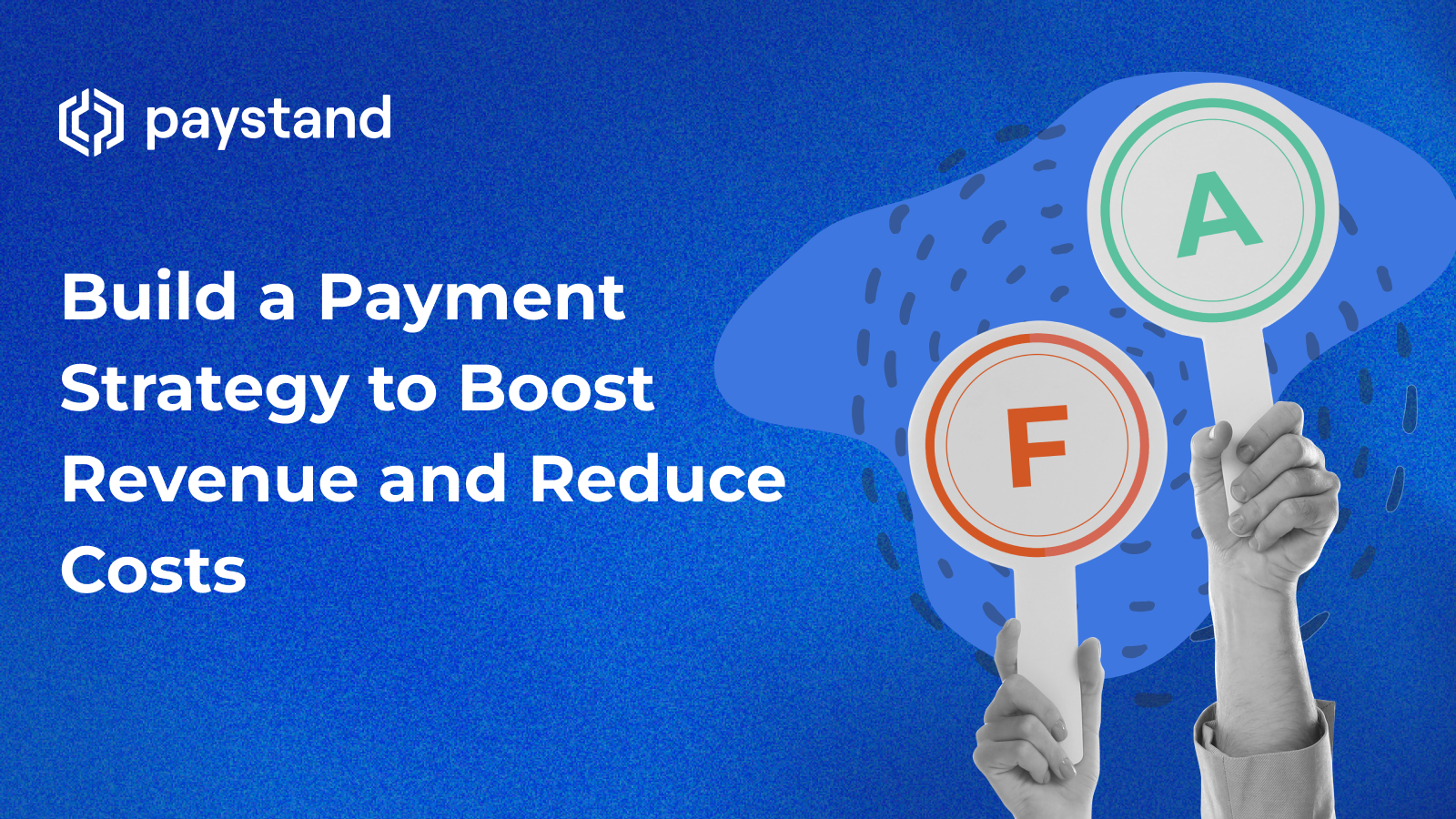Build a Payment Strategy to Boost Revenue and Reduce Costs

Table of Contents
- What Is a Payment Strategy?
- Key Components of an Effective Payment Strategy
- Payment Methods and Their Costs
- How to Reduce Transaction Fees
- Zero-Fee Strategy in Action
- Best Payment Strategies by Business Model
- Benefits of a Strong Payment Strategy
Key Takeaways
- A strong payment strategy reduces fees, improves cash flow, and enhances customer satisfaction.
- Not all payment methods are equal—understanding their true cost is essential.
- Zero-Fee strategies and smart automation shift fee burdens and reduce manual labor.
- Flexible, cost-effective payment options empower customers and finance teams alike.
- Tools like Paystand help build, automate, and scale your payment strategy for long-term growth.
In 2022 alone, U.S. businesses paid over $160 billion in credit card payment processing fees—costs that cut directly into profit margins. In 2025, AR professionals are turning to smarter payment strategies to reclaim that revenue, optimize cash flow, and deliver a better customer experience.
What Is a Payment Strategy?
A payment strategy is a proactive plan to manage how your business accepts, processes, and incentivizes payments. It’s about making every transaction faster, cheaper, and smarter—helping you get paid more efficiently while protecting your margins and offering a seamless customer experience. Digital payments are helping businesses visualize the full payment flow and improve their payment strategy.
Key Components of an Effective Payment Strategy
To build a resilient, scalable payment strategy, consider these six pillars:
- Payment Methods – Choose lower-cost, flexible options that benefit both you and your customers.
- Payment Processing – Streamline the process and minimize unnecessary steps or vendors.
- Cash Flow Management – Accelerate time-to-cash and reduce Days Sales Outstanding (DSO).
- Risk Management – Limit exposure to fraud, chargebacks, and late payments.
- Customer Experience – Provide intuitive payment experiences that encourage on-time payments.
- Cost Reduction – Avoid high transaction fees and manual labor wherever possible.
Payment Methods and Their Costs
Here’s a side-by-side look at common payment methods and how they affect your bottom line:
| Payment Method | Average Cost | Pros | Cons |
|---|---|---|---|
| Credit Card | 1.5%–4% + $0.20–$0.50 | Fast, convenient for customers | High fees, risk of chargebacks |
| ACH Transfer | $0.20–$3.00 | Low-cost, secure | Not instant, limited international use |
| Bank Wire | $25+ per transaction | Reliable for large sums | Expensive, manual effort required |
| Payment Gateway | 1.5%–3% + $0.25–$0.50 | Online checkout-friendly | Extra layer of fees |
| Paper Check | Labor-intensive, varies | Legacy clients may prefer | Prone to delays, errors, and higher labor costs |
How to Reduce Transaction Fees
Best payment strategies for increasing sales?
Start by lowering friction and raising margins. Encourage efficient payment methods and eliminate hidden costs that eat into profits.
Here are proven tactics:
- Adopt flat-fee ACH pricing to reduce variability.
- Add convenience fees to pass credit card costs to the payer.
- Eliminate checks by introducing digital lockbox systems.
- Automate payment collection and matching to reduce headcount costs.
- Promote Level 3 credit card processing for B2B payments.
- Offer early payment incentives to accelerate cash flow.
Zero-Fee Strategy in Action
Let’s say your customer owes $20,000. If they pay by credit card, your business pays 2%—that’s $400 lost. By adding a convenience fee, that $400 shifts to them. Or if they choose ACH at $0.50, your cost is negligible.
This “Zero-Fee” approach gives customers flexibility while protecting your profits.
A smart payment strategy uses two simple rules:
- Incentivize lower-cost payment methods like ACH or eCheck
- Disincentivize high-fee methods like credit cards via convenience fees
Best Payment Strategies by Business Model
How do I create a payment strategy for my business?
Match your model to the right methods. Consider scale, volume, and customer preferences.
For B2B Companies:
- Promote ACH and direct bank transfers
- Bake preferred methods into payment terms
- Use ERP integrations to automate collections and reconciliation
For Subscription Services:
- Set up autopay with tokenized card or bank info
- Use retry logic to reduce churn from failed payments
- Allow multiple payment types but prioritize bank-based ones
Benefits of a Strong Payment Strategy
A forward-thinking payment strategy can deliver:
- Lower transaction and labor costs
- Faster payments and stronger cash flow
- Streamlined finance operations
- Reduced fraud and error risk
- More customer-friendly experiences
- Clearer visibility into AR performance
Paystand empowers businesses to take control of their payment strategy with a fully automated AR platform designed for the modern CFO. Key features include:
Ready to see how your business can reclaim margin and improve AR efficiency? Learn more about our billing payment portal.





%20(1)%20(1).jpg?width=100&height=100&name=IMG_3752%20(1)%20(1)%20(1).jpg)